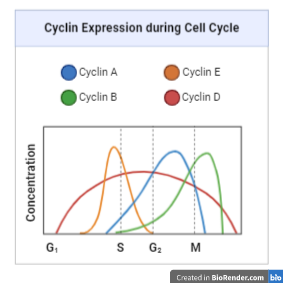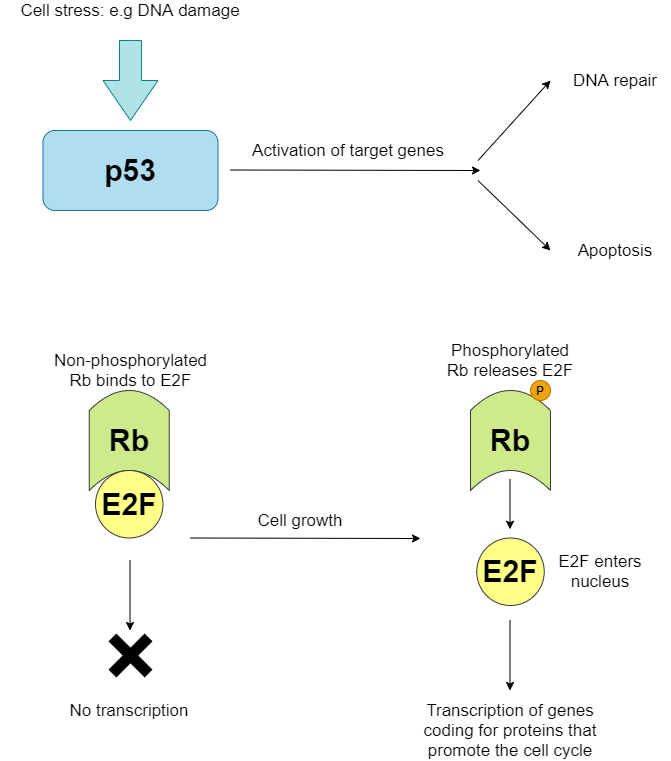In previous articles, we learned about the phases of the cell cycle and how these gradually lead a cell to division. However, do all the cells of our body have the ability to divide? If not, what is the factor that determines whether a specific cell will divide or remain idle until it dies? In addition to that, when is the right time for the division to take place? It seems that the fate of each of our cells is strictly regulated by a complicated system in which many different molecules take part to secure the body from abnormal cells that could put its course in danger.
Classification of cells
The various types of cells in our bodies belong to three categories. Two of them are represented by cells that can divide when needed. The third one refers to cells that have lost this ability after they have obtained their differentiated form and remain like this until they die. Neurons and muscle cells belong to that last category. Now, let’s go back to the cells that have the ability to divide. One type consists of cells that are often renewed inside the organism. Thus, they divide to replace old or worn-out cells. Epithelial cells that line the outer surfaces and inner cavities of the body are an example of this case. The remaining category is represented by cells that preserve the capability to divide but only do so in specific cases. For instance, when there is a need for repair, liver cells, or white blood cells will leave their resting state and start dividing.
Control of the cell cycle
A cell obtains signals from its environment. These signals determine when is the right time for the division to occur. Even so, there must be appropriate approval from the interior of the cell. That is because the cell might not be ready to divide for various reasons, as we will discuss in the following paragraphs. Growth factors and hormones are examples of molecules that bind to cell receptors, ordering the cell to initiate the division process. The signaling molecules vary, depending on the cell type, the developmental stage, the reason why division is needed, etc.
If the cell receives such a signal, it will initiate the transition from one phase to the next. At each stage, the cell checks whether the conditions are favorable. Non-favorable conditions might range from insufficient cell size to DNA damage. Hence, the cell state is inspected by molecules that are parts of the complicated regulatory systems we mentioned before. These molecules are various types of proteins that specialize in specific stages of the cell cycle. If these regulatory systems judge there is a problem, then the cell cycle halts until the damage is repaired or the conditions become favorable. If, however, the damage cannot be repaired, the cell cycle is permanently halted. Consequently, the cell might remain in a resting state for the rest of its life or might be driven to cell death to prevent further damage.
Cell cycle checkpoints
The examination of the cell’s integrity and the presence or absence of the appropriate conditions in and out of the cell is conducted by the cell itself at specific points called cell cycle checkpoints. These checkpoints determine whether the cell will proceed to the next stage or not. The regulatory mechanisms act before the transition from one phase to the next, and more precisely at the following points:
- G1 checkpoint: It refers to the control of the G1/S transition. It is considered a restriction point because, once the cell moves forward from this, there is no turning back, and it is committed to dividing. This checkpoint is responsible for assessing the size of the cell, the availability of nutrients and energy, and the presence of DNA damage. Additionally, it checks whether the cell is being triggered by the external environment via a sufficient concentration of growth factors, for example.
If all the above conditions are ensured, the cell is permitted to progress. It enters the S phase and replicates its DNA. Otherwise, the cell enters the G0 phase, outside of the cell cycle. That is a case of an inactive state when the cell does not divide. Now the cell will make the essential repairs or will wait until the conditions become favorable again. For example, until there is enough concentration of nutrients. The cell will then be ready to enter the cell cycle again and proceed to divide. Nevertheless, some cells remain in the G0 state forever and do not divide.
- G2 checkpoint: It refers to the G2/M transition. It follows the replication of the genetic material, and therefore, it is the last check before the cell begins the mitotic process. The most important responsibility of this checkpoint is to make sure that the DNA is intact. The cell is looking for signs of DNA damage or if replication has not been completed. Provided that there is no such problem, the cell is ready to enter mitosis. Otherwise, the cell cycle is halted for repair and restarts afterward.
- M checkpoint: It refers to the Metaphase/Anaphase transition and is alternatively known as the spindle checkpoint. The cell’s role during this checkpoint is to make sure that all of the sister chromatids are correctly arranged at the metaphase plate and connected to the mitotic spindle. If an error is detected, the mitotic process is halted. As soon as the problem is resolved, the cell proceeds to anaphase and is eventually divided into two daughter cells.

Cell cycle regulators
At this point, we’ve already concluded that the decision for a cell to proceed to division or not is determined by external and internal triggers. These triggers affect the concentration and activity of various molecules called cell cycle regulators. The cell cycle regulators are classified as positive regulators that allow the progression of the cell cycle and negative regulators that prevent division.
Positive regulators (Cyclins and Cdks)
Two classes of proteins belong to positive regulators. These are cyclins and Cyclin-dependent kinases (Cdks). The levels of the various cyclin molecules are altered depending on the cell cycle stage. In other words, there are cyclins specialized in the G1 phase, others in M, etc. On the other hand, the levels of the Cdks usually remain stable, but their activity depends on the cyclins. For a Cdk to become active, it must bind to a certain cyclin to create a Cdk-cyclin complex and also become phosphorylated.
Since Cdk is a kinase enzyme, its role is to add phosphate groups to target proteins. So, when it becomes active, it is ready to phosphorylate its protein substrates (targets). Each Cdk has specific targets, and these will eventually assist in the progression of the cell cycle. For example, a specific Cdk-cyclin complex will be formed in mitosis, and it will phosphorylate and thus activate other proteins. These proteins will take part in steps of mitosis, such as the destruction of the nuclear envelope or the chromosome condensation.


Negative regulators (p53 and Rb)
If for some reason, it is unsafe for a cell to divide, then the transition from one phase to the next must be prevented. That is achieved with the action of negative regulators. Two examples of negative regulators we will discuss briefly are the proteins p53 and Rb. If DNA damage is detected, p53 will halt the cell cycle. One of its roles is to recruit enzymes that are responsible for repairing the DNA. If, however, the damage cannot be repaired, p53 activates apoptosis (cell death). Similarly, Rb (also called Retinoblastoma Protein) is a protein that acts at the G1 phase. When the cell is small in size, this protein is not phosphorylated. This way, it binds to the transcription factor E2F and blocks the transcription, and therefore the production of proteins that are necessary for the G1/S transition.

Cell cycle regulation and cancer
From all of the above, we realize how valuable cell cycle regulation is. If everything works as planned, then a cell only divides when it is safe and needed. This way, negative implications, such as the division of damaged cells or division in the absence of triggering signals, are avoided. These specific examples are two of the main features of cancer cells. In cancer, cells have the ability to multiply uncontrollably, ignoring the regulatory mechanisms. They continue to divide, resulting in the accumulation of damaged and dangerous cells in the body.
Sources:
https://courses.lumenlearning.com/boundless-biology/chapter/control-of-the-cell-cycle/
Read this review paper for more information:
https://www.ncbi.nlm.nih.gov/pmc/articles/PMC4990352/pdf/nihms734418.pdf
